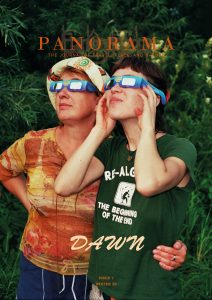All those who remember Nepal in the late 80s, early 90s will remember it as an untouched, pristine, fairy tale land – an unspoiled kingdom with very limited tourism – visited mainly by mountaineers and trekkers heading towards Mount Everest. A destination that seemed to have held its own against fast galloping modernity that could be seen all around. It was a country that had the most amazing natural habitat and interesting buildings and all without the accompanying commercialisation that seemed part and parcel of all popular tourist destinations even back then.
The temples, city squares, bazaars, natural landscapes and the friendly people…..are etched in my mind and I still carry wonderful memories of the unspoiled and relatively clean city and its surroundings from my first visit to Kathmandu, the capital of Nepal some 20 years ago. It was a week-long tour without a fixed agenda other than to get a feel of the place and explore whatever could be done comfortably with minimum expenditure. We used public transport and often hired bicycles, not just because we wanted to experience the city from up close but because we were almost on a shoestring budget and needed to save our money for more important things. Looking back now I realise that was one of our best decisions as we happily cycled around and interacted with local people as and when we wanted to and stopped only at beautiful spots to take in the stunning landscape. There were no tourist guides asking us to hurry up so that we could move to the next destination on the itinerary.
Despite having heard and read about the impressive historical and architectural heritage of Nepal, for some reason, it was the breath-taking natural beauty, the undulating landscapes, the mountains and valleys that appealed to me more than anything else. And can you blame me?! Coming from Rajasthan, the land of forts and palaces and sand dunes, seeing so much greenery and wooden structures gave me a feeling of being in a totally different world all together. And it was a different world, undoubtedly, because in Rajasthan stone has always been the primary construction material and the use of wood was negligible. However, in order not to miss the touristy places we checked them out as well and we were helped in this by so many wonderful local people who went out of their way to guide and give us the required information. We were able to get hold of a very basic map but didn’t feel the need for anything else – there weren’t too many brochures (or Apps like we have now) to help us with our tour. The sheer simplicity and ease of moving around is another memory that has stayed with me – even though tourists in Nepal were a bit of a rarity, local people went all out to ensure that “guests” in their country were not inconvenienced in any way and happily guided us to the important, not-to-be-missed, sites.
Some of the sites that we were able to see included the temple of Lord Pashupatinath – the most revered deity in Nepal. A visit to this amazing temple was definitely on our to-do list. Situated in Makhan Tole of Kathmandu, Pashupatinath houses a five-faced Shiva-lingam. A legend connected to the temple records that a certain Malla king used to go to the original Pashupatinath temple for darshan every day but was unable to go there on one occasion due to floods. He waited at the river bank to see if he could find a way to go for darshan but he fell asleep and dreamt of Lord Pashupatinath who asked him to establish a temple at his palace. That is how this temple was set up. Other than Pashupatinath, a few other important places that one had set out to experience were Bhaktapur Durbar Square, Kasthamandap and, if possible, a closer glimpse of the Living Goddess Kumari.
Bhaktapur Durbar Square with its fancy gates and the palace of fifty-five windows was considered to be a unique masterpiece of woodcarving; Kasthamandap at Maru Tole was always recognised as the core of Kathmandu’s cultural identity, and a crucial component of its living heritage. The word, ‘Kasthamandap,’ literally means a wooden shelter, or pavilion. Interestingly, the core wooden structure is believed to have been made from the bark of a single tree. It was the oldest standing public building in Kathmandu with elements of its structure dating back to at least 1143 CE, and possibly to 1090 CE. Originally, Kasthamandap was constructed as a public rest house, and housed shrines to multiple deities. It also marked the central point of Kathmandu, and interestingly, the city gets its name from this monument. Kasthamandap has had a special bond with generations of Nepali citizens and local residents and travellers used Darbar Square as a space to rest, and even we, as tourists, felt a sense of peace and quiet as we spent several hours here just sitting on the steps and watching people go about their daily chores. There were no touts to disturb the peace and nobody even looked twice at us as people stopped by to rest on the red steps. There were several roadside flower, vegetable and fruit sellers, and pretty ladies with their wares displayed neatly on plastic sheets spread on the ground, who happily spent more time chatting than selling! The giant courtyard was made for people to connect and that is exactly what most of them did.
Getting to the courtyard of Kumari Bahal, home of the living goddess, on the south side of Durbar Square was through narrow lanes and there was nothing to set the Kumari’s abode apart from the other houses there. The cult of the Kumari, the virgin goddess, is deep-rooted among Kathmandu Hindu and Buddhist people and obviously the tradition goes back several generations, although no one has been able to ascertain when the Kumari Puja custom actually started. We hung around the area for a bit hoping to catch a glimpse of the Kumari and were lucky, as we managed to do so without too much trouble. I remember the fair and pretty young girl with large eyes as she looked on at the dozen odd people who had gathered there to take a closer look.
Another interesting site we explored was the Patan Golden Temple with its distinctive pagoda architecture and the gilded roofs. Situated on a busy crossroad in Patan, it was built around the 12th Century AD after being commissioned by one King Bhaskar Verma. It is one among many Buddhist monasteries in Nepal and stands out also for its impressive entrance that is guarded by two intricately carved stone lion figures. This temple is a landmark and recognised for its structure as well as its centuries old traditions and heritage.











